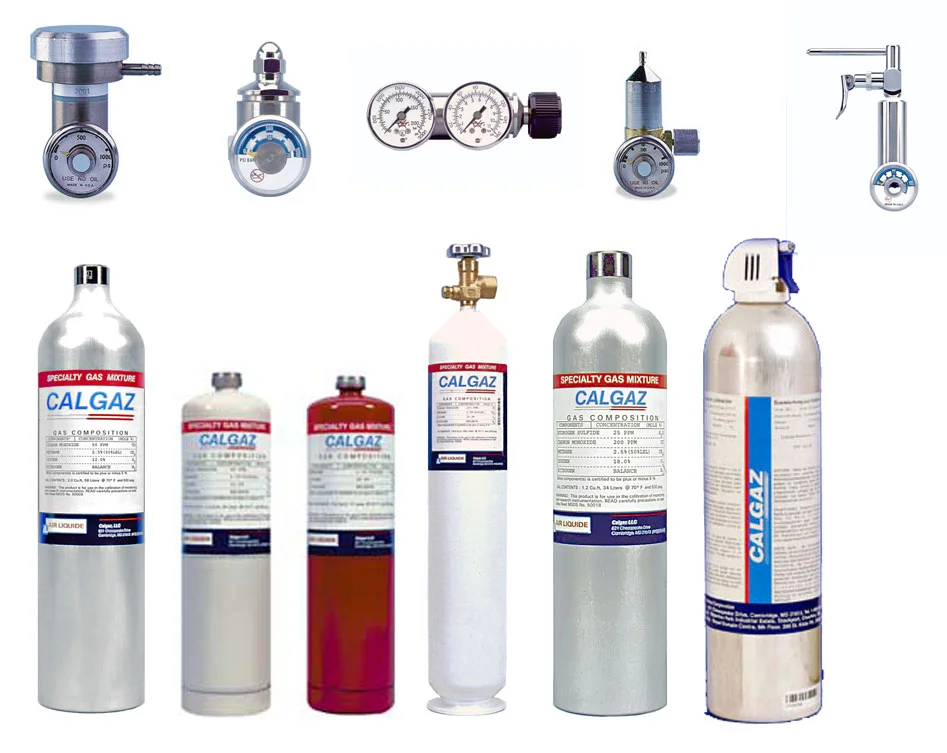
Calibration Gas (Calibration Gas) and its use in various industries
Calibration of gas measuring instruments in laboratories and industries is necessary to ensure that they function correctly and provide accurate measurement results. Calibration gas is a gas that has a composition and concentration that Know and be precise It is used to calibrate various gas analysis instruments and sensors, especially in industries that require high accuracy, such as the petrochemical industry, power generation, and air quality monitoring.

Type of calibration gas
1. Single Gas
” A single gas is a single gas with a given concentration, such as oxygen (O₂), carbon dioxide (CO₂), and sulfur dioxide (SO₂). These gases are often used to calibrate measuring instruments that are specific to a specific gas.
2. Gas Mixtures
A gas mixture consists of several gases mixed together in a specified ratio, such as a mixture of nitrogen (N₂) and oxygen (O₂), or a mixture of carbon dioxide (CO₂) and methane (CH₄). These gas mixtures are often used to calibrate instruments. Measurement that can detect multiple gases at once

Procedure for using calibration gas
1. Selection of calibration gas
” Selecting the appropriate calibration gas is an important first step. A gas should be selected that matches the type of gas to be measured and has a concentration similar to that expected to be found in the sample.
2. Installation and connection
Connect the calibration gas cylinder to the analyzer via a flow regulator and gas pipeline. Proper installation will ensure a smooth calibration.
3. Gas flow adjustment
Adjust the calibration gas flow to remain constant and within the rate specified by the analyzer. Accurate flow adjustment ensures accurate calibration.
4. Recording readings
Turn on the calibration gas and record the readings displayed by the analyzer. Then compare the readings with the known values of the calibration gas.
5. Adjusting analytical tools
If the reading differs from the known value of the calibration gas. Adjust the analyzer according to the manufacturer's instructions so that the measurement values match those of the calibration gas.
Advantages of using calibration gas
1. Accuracy Calibration gases help the analytical instrument with accurate gas measurements. Regular calibration reduces measurement error.
2. Reliability Calibration with a certain concentration of gas increases the reliability of measurement and analysis results.
3. Quality inspection Analytical instrument calibration is the inspection and maintenance of instruments to keep them operating efficiently and to extend their lifespan.
Calibration gas maintenance
Proper storage and care of calibration gas is important to ensure gas concentration and accuracy are maintained. Calibration gas should be stored in a cool, dry place. Away from sunlight and heat sources. Inspect the gas cylinder and connection equipment regularly to ensure there are no leaks.
Conclusion
Calibration gases are an important tool for checking and adjusting gas analysis instruments to work properly and provide accurate measurement results. The use of calibration gases improves the reliability of analysis and measurement across industries, where it is important to maintain quality and safety standards.